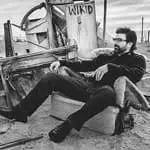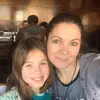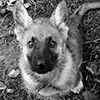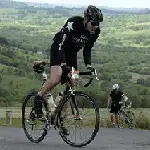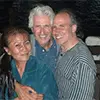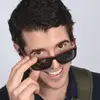Studio Portrait Photography Lighting Tips
Last Updated :In studio portrait photography you will be using only artificial lighting. This allows you to manipulate the lighting to your best advantage so as to produce exactly the effect you want – soft portraits, dramatic brightly lit images, or side profile portraits. Here are some tips that can help you with lighting in studio portrait photographs.
Butterfly lighting
This is the most basic, traditional form of studio portrait photography lighting and is also called paramount lighting. It basically uses two lights, the key light which is placed directly in front and higher than the subject’s face and another light called the fill light which is placed below the key light at the height of the subject’s head. A reflector should be used on the opposite side. Together these lights light the shadows on the face creating a butterfly effect. In addition, you could also use a hair light opposite the key light and a background light low and behind the subject.Loop lighting
This is a variation of the butterfly lighting in which the key light is lowered and moved to the side of the subject’s face. The fill light is placed on the opposite side. You need to be careful that the fill light does not cast a shadow in the field. If you are using the hair and background lights, they would be in the same position as for butterfly lighting.Rembrandt lighting
As the name suggests, this is inspired by Rembrandt who used skylights in a pattern to illuminate his subjects. In this form of studio portrait photography lighting, the key light is moved lower and more to the side to light the subject’s side face. The fill, hair and background lights are used as in loop lighting. In addition, Rembrandt lighting uses kicker lights to light up the shadowed side of the subject’s face. This creates a brightly lit, dramatic portrait. Take care to ensure that the kicker light does not shine onto the camera directly.Split lighting
In this form of lighting, the key light only illuminates one half of the subject’s face. Place the key light to the side of the subject’s face or even slightly behind. The fill, hair and background lights are used as in loop lighting. This too creates dramatic portraits and can be used to make the face look slimmer or hide irregularities in the subject’s face as one half of the face is in the shade.Rim lighting
This is also called profile lighting. In this form, the subject’s face is turned 90 degrees from the camera lens. The key light is placed behind the subject and illuminates the side profile, outlining the edge of the face as well as highlighting the neck and hair. The fill light is placed on the same side as the key light so you need to use a reflector to fill in shadows. Hair and background lights are optional in this form of lighting. Backup & Transfer your Photos in Minutes
Automate backup & migration of your photos & videos with support for all top services.
Trusted by users in 125+ countries.
95,000+ Users Trust PicBackMan To Backup Precious Memories
Kip Roof

PicBackMan does exactly what it's supposed to. It's quick and efficient. It runs unobtrusively in the background and has done an excellent job of uploading more than 300GB of photos to 2 different services. After having lost a lot of personal memories to a hard drive crash, it's nice to know that my photos are safe in 2 different places.
Julia Alyea Farella 
LOVE this program! Works better than ANY other program out there that I have found to upload thousands of pictures WITH SUB-FOLDERS to SmugMug!
Thank you so much for what you do! :) #happycustomer
PausingMotion
I pointed PicBackMan at a directory structure, and next time I looked - all the photos had uploaded! Pretty cool. I use SmugMug and while I really like it, the process of creating directories in is pretty laborious when you need to make 80+ at a time. This was a breeze. Thank you!
Gavin Whitham
PicBackMan was really easy to setup and has been running for 3 days now backing up all my locally saved photos to Flickr. My photos are really valuable to me so it's great to be able to have them easily backed up to a secure location.
Jim Griffin
It's AWESOME!! I have tens of thousands of pictures...and they are now successfully uploaded to SmugMug, where they are safely backed up, and I can edit and organize them. If you are hesitating about using PicBackMan, hesitate no longer...try it...and you'll be glad you did!!
Robert
I started with the basic plan, went to premium and now on their platinum plan and it's more than worth the price for me. PicBackMan has saved me many tedious hours of effort moving many files between my various cloud and photo site services and my local computers.
Vlad
I am very satisfied and surprised at the same time with Pic BackMan. The service is very good and useful. I used it to transfer my photos from Dropbox to my Flickr accound. I highly recomment it.
Dave
PicBackMan was an answer to many a prayer. How can I get this MASSIVE collection of photos onto a service that cripples uploading? PicBackMan. I uploaded approximately 85,000 photos in less than a month. It would have taken me close to a year to get all of those photos where they needed to go. Nothing short of brilliant.
Dary Merckens
I have thousands of family photos and it's always been such a pain to upload them to various cloud services for offline storage. Well not anymore! PicBackMan makes backing everything up a complete breeze. I don't know how I ever lived without it!
Glen Martineau
I was poking around the Internet looking for an easy tool to help me consolidate 15 years of my pictures from Google Photos and Flickr etc - this tool was very easy to use and was painless to setup.
